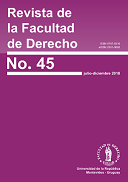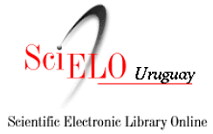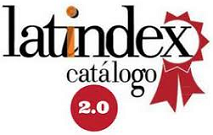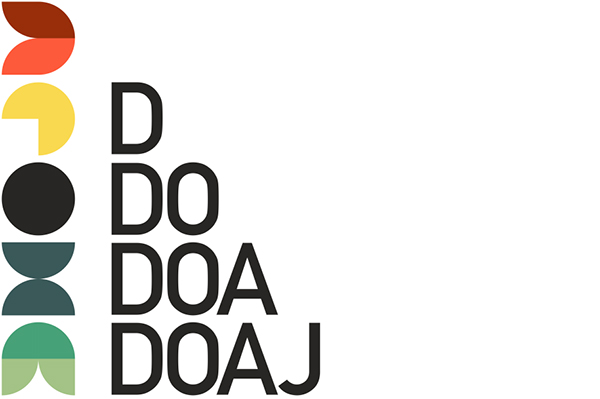Aportes para Enseñanza del Derecho Probatorio:
método colaborativo inducido por el diálogo socrático
Resumen
El método socrático sigue siendo válido -y lo demuestra la investigación más reciente- en tanto complementario a otras metodologías la manera de facilitar al estudiante un tránsito desde el escuchar y olvidar hacia el hacer y saber hacer es el aprendizaje colaborativo con el diálogo socrático. Ello ya que el aprendizaje colaborativo aplicado empíricamente con éxito en la enseñanza con metodologías activas del Derecho Probatoria en el pregrado. Con el empleo combinado del diálogo socrático y las estrategias colaborativas se aprovecha la distracción del estudiante para valorarlo y hacerlo participe en su grupo y en la clase. En el aprendizaje colaborativo la orientación (no imposición) proviene del estudiante y de los pares, el docente no da la respuesta, sino que oriente hacia ella y eso es el plus que otorga lo socrático o inducido al aprendizaje entre pares. El método socrático en el marco colaborativo ha sido redescubierto y demuestra eficacia. Especialmente en la enseñanza del derecho las discusiones en torno a él son muy valiosas y la discusión sobre su aplicación como metodología exclusiva sigue vigente incluso. Este es un aporte para diversificar los métodos de enseñanza del Derecho que no se reducen solo a la ley, su conocimiento y aplicación, la excede y comprende aspectos del estudiante que pueden ser mejor incentivadas y aprovechados. A partir de la determinación del problema en general en la enseñanza-aprendizaje y los desafíos planteados, se parte de la hipótesis de la necesidad de combinar el diálogo socrático con el aprendizaje colaborativo como metodología de la enseñanza innovativa y disruptiva. Se traduce en el diseño de actividades y secuencias en un escenario pedagógico real de una asignatura: el Derecho Probatorio. Los resultados empíricos de esta actividad educativa confirman la validez de las propuestas y tesis planteadas.
Descargas
Citas
Anderson, L. W., Krathwohl, D. R., Airasian, P. W., Cruikshank, K. A., Mayer, R. E., Pintrich, P. R., Raths, J. y Wittrock, M. C. (2001). A taxonomy for learning, teaching, and assessing: A revision of Bloom’s Taxonomy of Educational Objectives. New York: Longman.
Ayers, P. (2006). Using subjective measures to detect variations of intrinsic cognitive load within problems. Learning and Instruction, 16(5), 389-400.
Bartimote-Aufflick, K., A., B. y Ainle, M. (2006). University Teachers Engaged in Critical Self-Regulation: How May They Influence Their Students? En A. Efklides y P. Misailidi, Trends and Prospects in Metacognition Research (pp. 427-444). London: Springer.
Beryl, B. (1992). Teaching Evidence: Storytelling in the Classroom. The American University Law Review, 41, 453.
Berrett. D. (2012). How ‘flipping’ the classroom can improve the traditional lecture. The Chronicle of Higher Education, 12, 1-14
Carnelutti, F. (1982). La Prueba Civil. Buenos Aires: EJEA.
Cobas Cobiella, M. E. (2015). El aprendizaje cooperativo: una competencia imprescindible para la formación de juristas. Revista Boliviana de Derecho, 18, 604-621.
Cobas Cobiella, M. M. y Mirrow, M. (2014). Educación legal en los Estados Unidos. Facultades de Derecho y el Juris Doctor. Inter-American Law Review , 46(1), 7-31.
Coloma Correa, R. (2005). El ocaso del profesor Binns: Un ensayo acerca de la enseñanza del derecho en Chile. Ius et Praxis, 11(1), 133-172.
Couture, E. (1977). Fundamentos del Derecho Procesal Civil. Buenos Aires: Depalma.
Fiss, O. (1999). El derecho según Yale. En M. Böhmer, La enseñanza del Derecho y el ejercicio de la abogacía (págs. 26-35). Barcelona: Gedisa.
Fadul, J. A. (2009). Collective Learning: Applying distributed cognition for collective intelligence. The International Journal of Learning. 16 (4), 211–220.
Fernández March, A. y Bolonia, T. (2006). Metodologías activas para la formación de competencias. México, D.F.: Educación Siglo XXI.
Fredrick E. (2010). Toward a General Theory of Standards of Proof, 60 Cath. U. L. Rev. (2010), 1.
Gokhale, A. A. (1995). Collaborative learning enhances critical thinking. Journal of Technology Education, 7(1), 22-30.
Hammill, J., Best, G. y Anderson, J. (2015). Developing Student Mentor self-regulation skills through formative feedback: Rubric development phase. Journal of Peer Learning, 8, 48-58.
Heer, R. (2012). Iowa State University Center for Excellence in Learning and Teaching Updated. Recuperado de http://www.celt.iastate.edu/teaching/effective-teaching-practices/revised-blooms-taxonomy(revisado 25/8/2016).
Hess, Gerald F. (2013). Blended Courses in Law School: The Best of Online and Face-to- Face Learning? McGeorge Law Review, 45, 51-67
Hess, G., Friedland, S., Schwartz, M. y Sparrow, S. (2011). Techniques for Teaching Law 2. North Carolina: Carolina Academic Press.
Hopkins, A. (2008). Teaching Evidence Law Within the Framework of a Trial: Relating Theory to Practice as Students Take to Their Feet and Take Responsibility for the Trial Narrative. Journal of the Australian Law Teachers Association, 173-184.
Iborra Cuéllar, A. y Izquierdo Alonso, M. (2010). ¿Cómo afrontar la evaluación del aprendizaje colaborativo? Una propuesta valorando el proceso, el contenido y el producto de la actividad grupal.Revista General de Información y Documentación, 20, 221-241.
Kaori, Y. y Hidetoshi, Y. (2017). Project-based learning in out-of-class activities: flipped learning based on communities created in real and virtual spaces. Procedia Coputer Service, 112, 1044-1053.
Kennedy, D. (1987). The Responsibility of Lawyers for the Justice of Their Causes. Texas Tech Law Review, 18, 1157-1163.
Kennedy, D. (1982). Legal Education and the Reproduction of Hierarchy. Journal of Legal Education. 591-615.
Lobato, C. (1997). Hacia una comprensión del aprendizaje cooperativo. Revista de Psicodidáctica, 4, 59-76.
Kolb, D. A. (1976). The Learning Style Inventory: Technical Manual, Boston, Ma.: McBer.
Kolb, A. Y., y Kolb, D. A. (2005). The Kolb Learning Style Inventory – Version 3.1: 2005 Technical Specifications. Haygroup: Experience New York: Based Learning Systems Inc.
Lage, M. J., Platt, G. J. y Treglia, M. (2000). Inverting the classroom: A gateway to creating aninclusive learning environment. The Journal of Economic Education, 31(1), 30–43.
Lam, D. (2004). Problem-based learning: an integration of theory and field. Journal of Social Work Education, 40, 371, 372.
Leclerc, O. (2012). La distinction entre ’la preuve en droit’ et la ’preuve en science’ est-elle pertinente? E. Truilhé-Marengo. Preuve scienti que, preuve juridique. Paris: Larcier.
Lemmer, C. (2013). A view from the Flip Side: Using the “Inverted Classroom” to Enhance the Legal Information Literacy of the International LL.M. Student. Law Library Review, 2, 461-491.
Mayer, R. E. (2009). Learning and Instruction. Upper Saddle River, NJ.: Pearson/ Merrill/ Prentice Hall.
Mazur, E. (1996). Peer Instruction: A User’s Manual. Boston, MA: Addison Wesley.
Mazur, E. (2006). Peer Instruction: Wie man es schafft, Studenten zum Nachdenken zu bringen. Praxis der Naturwissenschaften. Physik in der Schule, 55(4), 11-15.
Miller, K., Schell, J., Ho, A., Lukoff, B. y Mazur, E. (2015). Response switching and self efficacy inPeer Instruction classrooms. Physical Review Special Topics - Physics Education Research, 11(1),1–8.
Nicol, D. J. y Boyle, J. T. (2003). Peer instruction versus class- wide discussion in large classes: A comparison of two interaction methods in the wired classroom. Studies Higher Education, 28, 457-473.
Nance, D. (2016). The Burden of Proof. Cambridge: Cambridge U. Press.
Oh, R. y Reamy, B. (2014). The Socratic Method and Pimping: Optimizing the Use of Stress and Fear in Instruction. American Medical Association Journal of Ethics, 16(3), 182-186.
Orejundo-Hernández, S., Fernández-Turrado, T. y Garrido-Laporte, M. A. (2008). Experiencias con metodologías activas en la formación del profesorado. Revista Interuniversitaria de Formación del Profesorado, 63(22), 21-45.
Palincsar, A. S. (1998). Social constructivist perspectives on teaching and learning. Annual Reviewof Psychology, 49, 345-373.
Prince, M. (2004). Does active learning work? A review of the research. Journal of Engineering Education, 93(3), 223–231.
Pantoja Ospina, M. A. (2013). Learning Styles Models : An upgrade for their revision and analysis. Revista Colombiana de Educación, (64), 79–105.
Posner, R. A. (2001). Clinical and Theoretical Approaches to the Teaching of Evidence and Trial Advocacy. Chicago: University of Chicago Law School
Prütting, H. (2016). Münchener Kommentar zur ZPO. Múnich: Beck.
Ramy, H. (2013). Moving Students from Hearing and Forgetting to Doing and Understanding: A Manual for Assessment in Law School. Capital University Law Review, 41, 837-850.
Roberts, P. (2002). Rethinking the Law of Evidence: A Twenty-First Century Agenda for Teaching and Research. Current Legal Problems, 55(1), 1.
Rothstein, P. (2006). Teaching Evidence. Georgetown: Georgetown University Law Center.
Ryan, E., Shuai, X., Ye, Y. y Ran, Y. (2014). When Socrates meets Confucius: teaching creative and critical thinking across cultures through multilevel Socratic method. Nebraska Law Review, 92(2), 290-349.
Santiveri Morata, F., Iglesias Rodríguez, C., Gil Iranzo, R. y Rourera Jordana, R. (2011). Metodologías activas en la docencia universitaria: resultados de algunas experiencias realizadas. IX Jornades de xarxes d’investigació en docència universitària Recuperado de http://dialnet.unirioja.es/servlet/articulo?codigo=4127817
Sentis Melendo, S. (1979). La Prueba. Buenos Aires: EJEA.
Schatzberg, L. (1999). Applying Bloom’s and Kolb’s Theories To Teaching Systems Analysys and Design. Recuperado de https://www.researchgate.net/publication/241724614_Applying_Bloom's_and_Kolb's_Theories_To_Teaching_Systems_Analysis_Design
Strayer, J. F. (2012). How learning in an inverted classroom influences cooperation, innovation and task orientation. Learning Environments Research, 15(2), 171-180.
Taruffo, M. (2003). Rethinking the Standard of Proof. American Journal of Comparative Law, 51, 659-677.
Taruffo, M. (2010). Evidence, in International Encyclopedia of Comparative Law, Vol. XVI, Cap. 7, Berlin: Mohr Siebeck, Tübingen.
Thalluri, J., O ’Flaherty, J. A. y Shepherd, P. L. (2014). Classmate peer-coaching: “A Study BuddySupport scheme”. Journal of Peer Learning, 7(7), 92–104.
Turull, M. (Ed). (2011). Experiencias de mejora e innovación docente en el ámbito del Derecho. Barcelona: Universidad de Barcelona.
Thies, D. (2010). Rethinking Legal Education in Hard Times: The Recession, Practical Legal Education and the New Job Market. Journal of Legal Education, 59, 598-630.
Vickrey, T., Rosploch, K., Rahmanian, R., Pilarz, M. y Stains, M. (2015). Research- Based Implementation of Peer Instruction: A Literature Review. Life Sciences Education, 2, 14-19.
Wolff, L.-C. y Chan, J. (2016). Flipped Classrooms for Legal Education. New York: Springer.
Los autores conservan sus derechos de autor y ceden a la revista el derecho de primera publicación de su obra, el cuál estará simultaneamente sujeto a la licencia Creative Commons Reconocimiento 4.0 Internacional License. que permite compartir la obra siempre que se indique la publicación inicial en esta revista.












